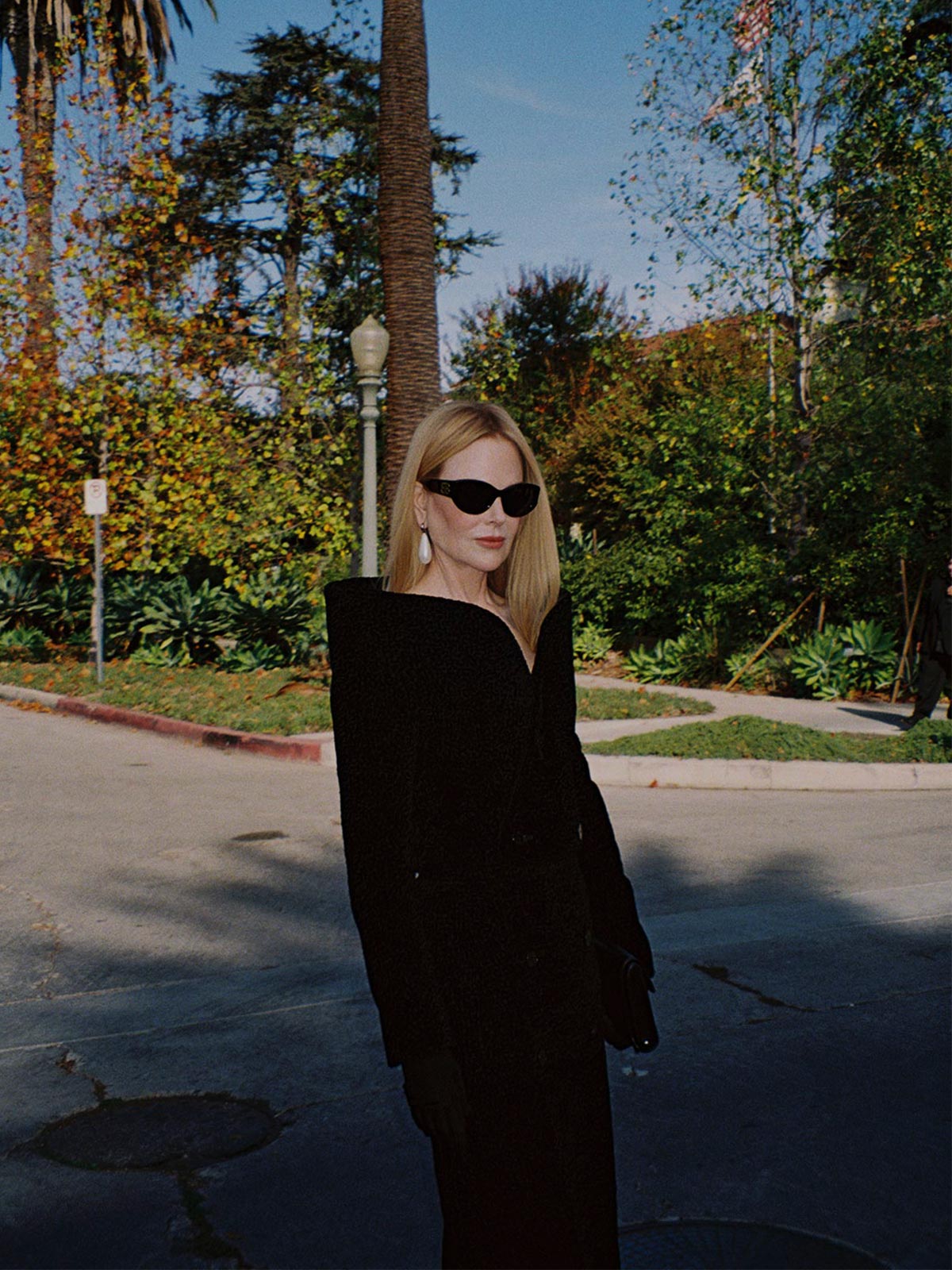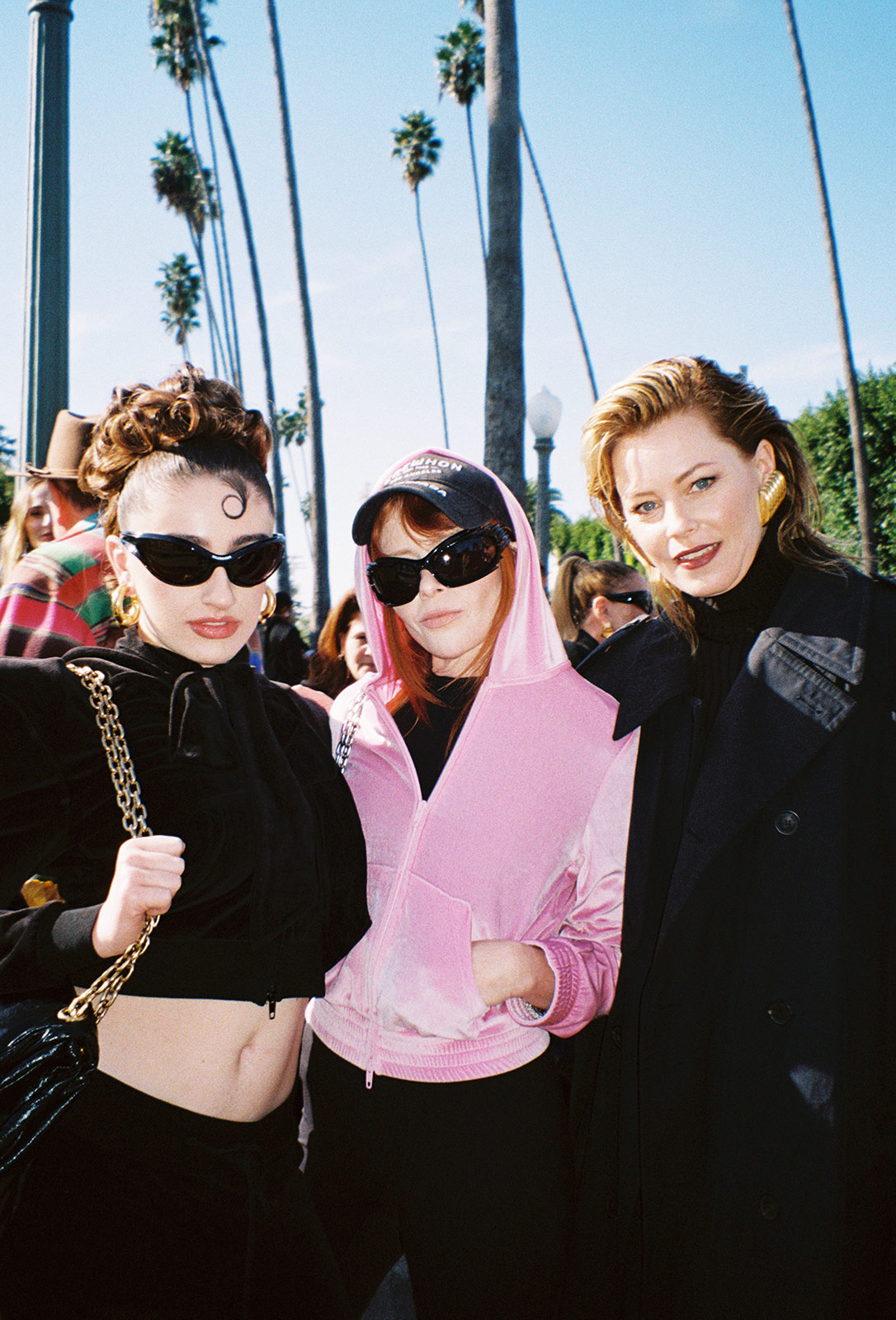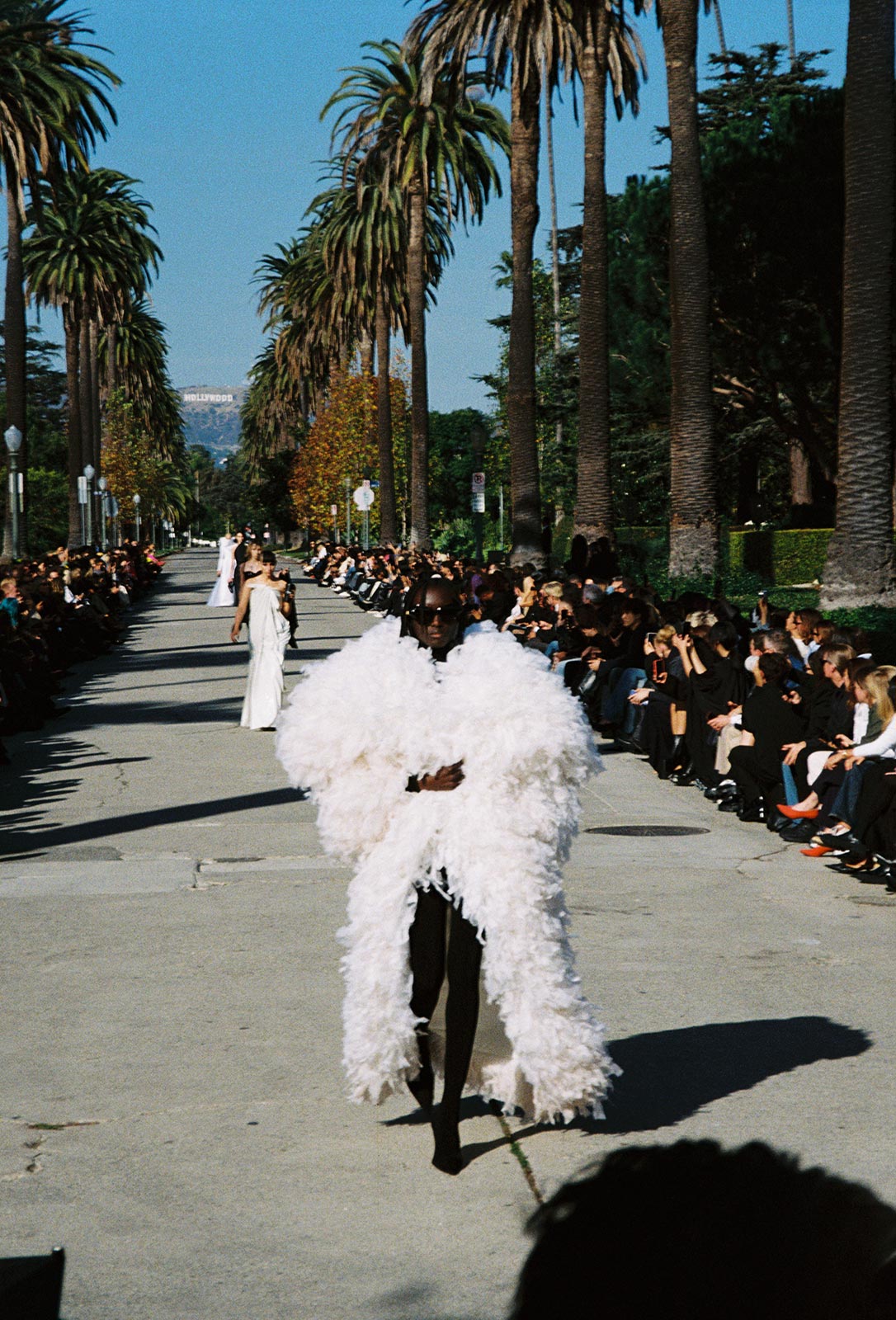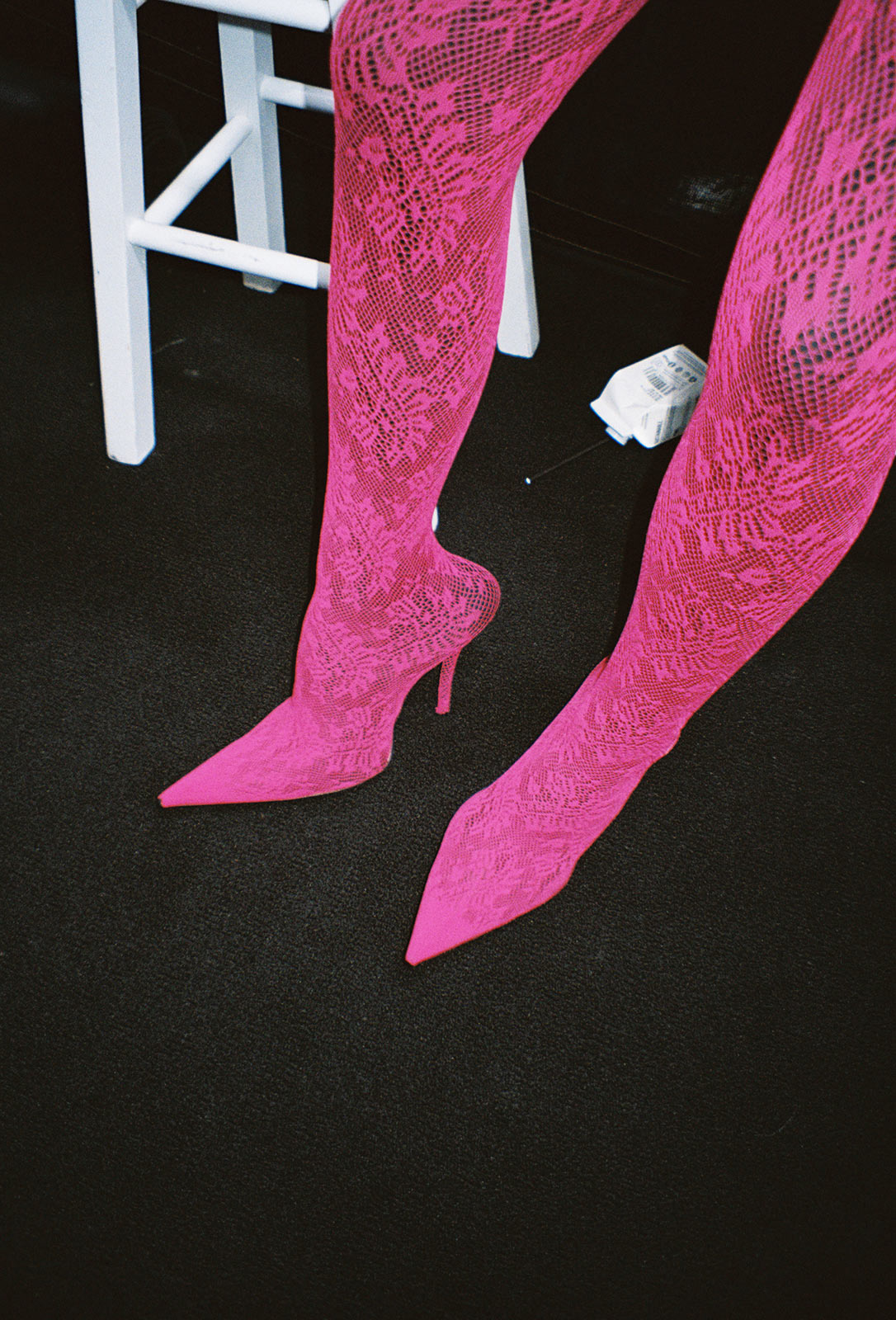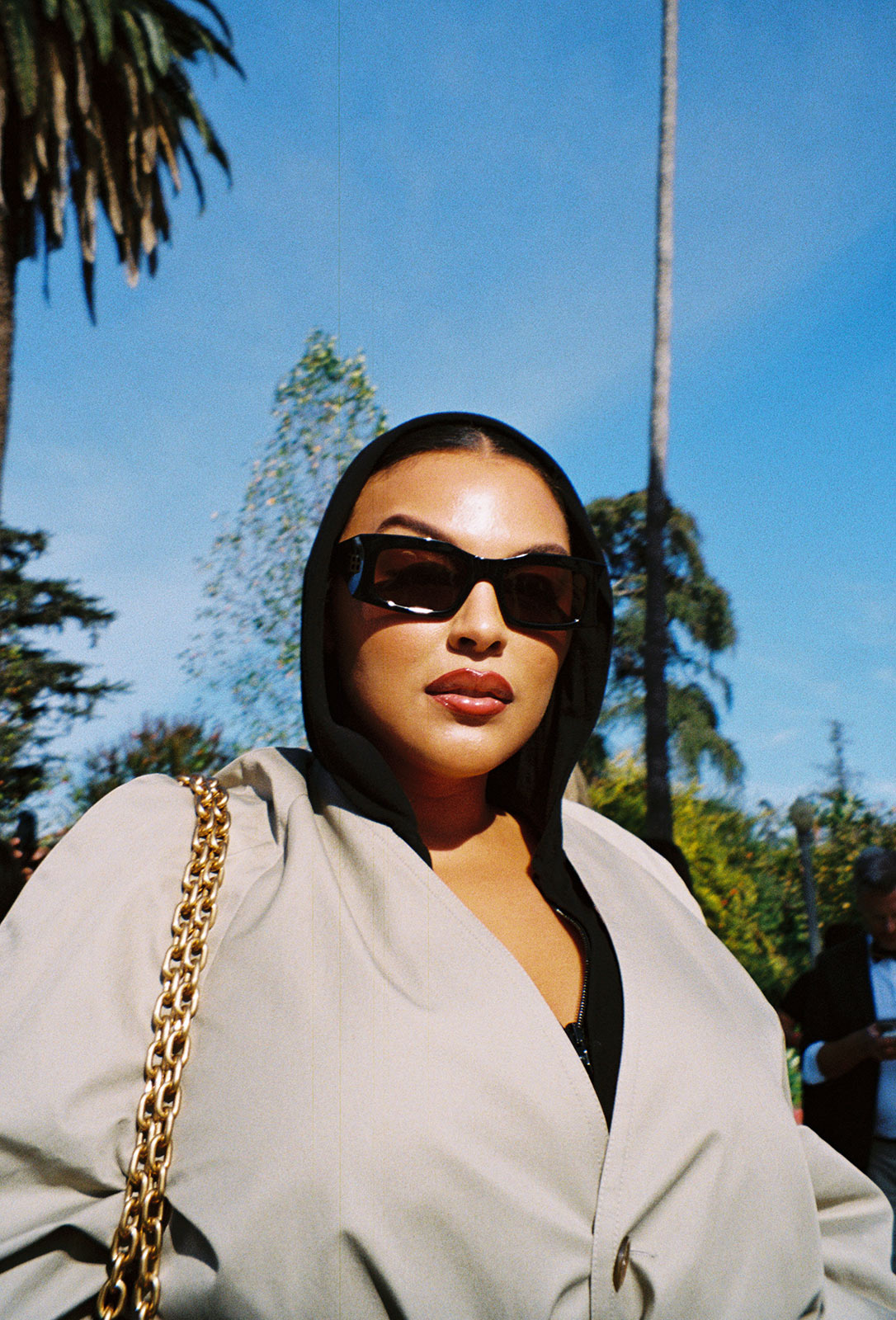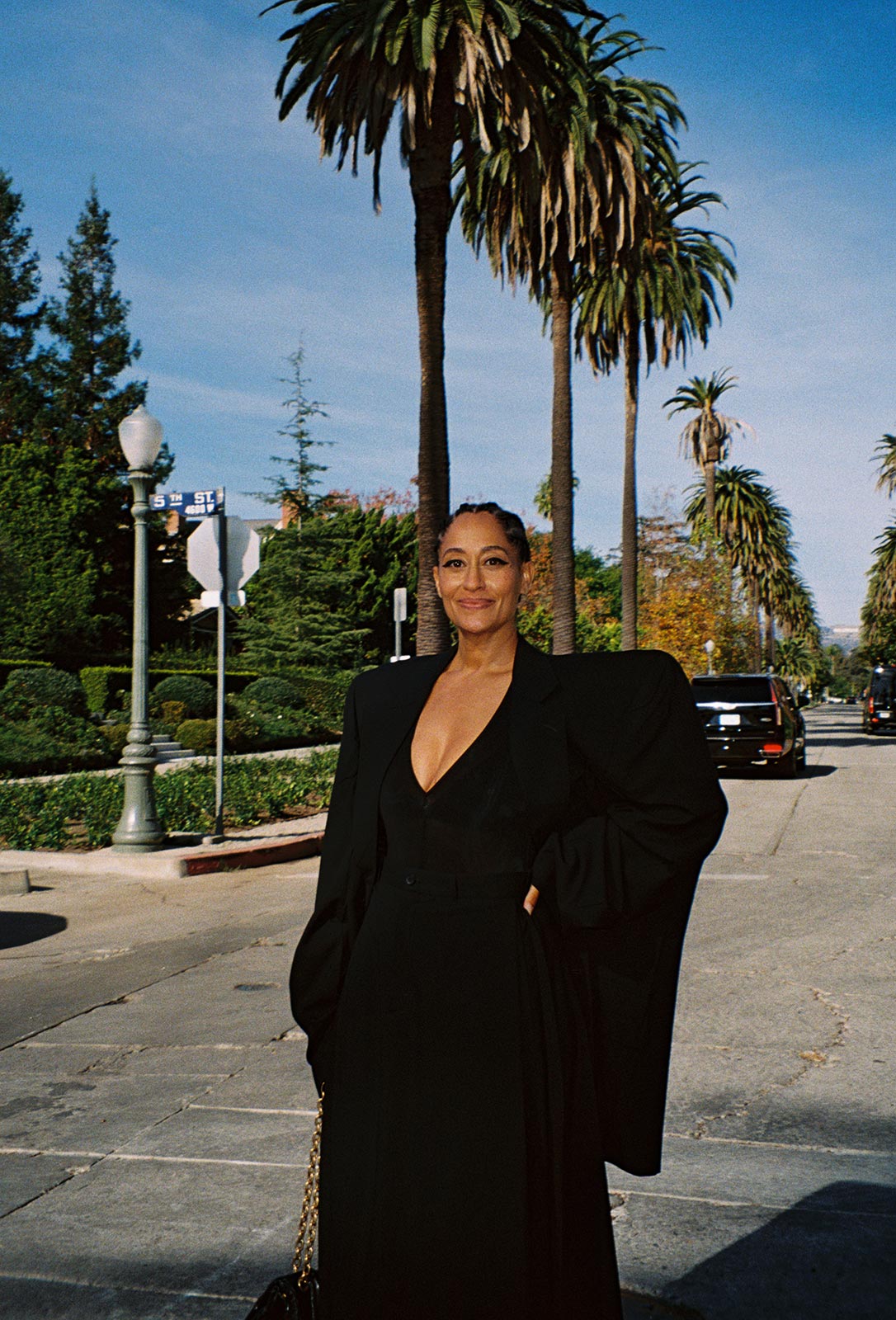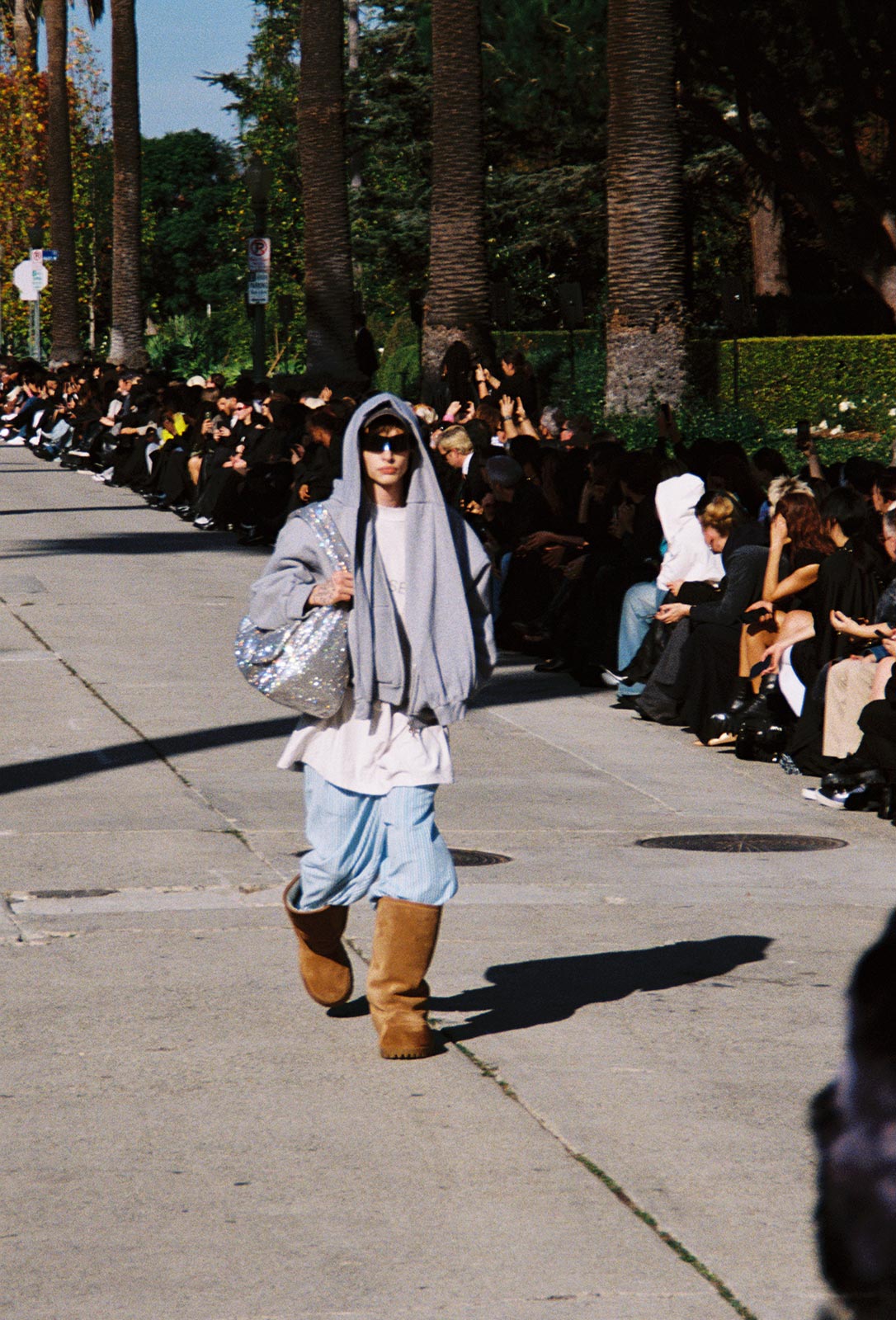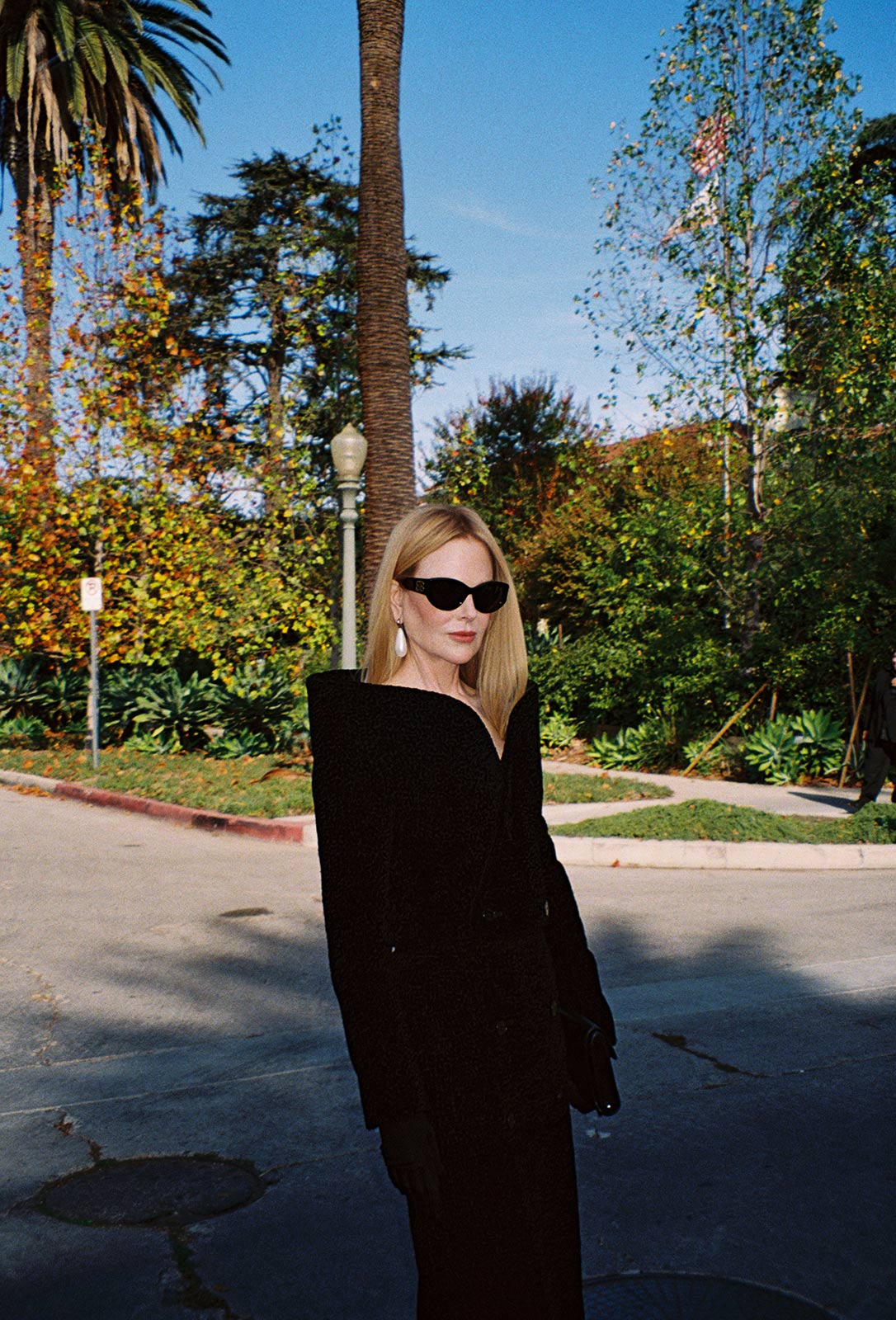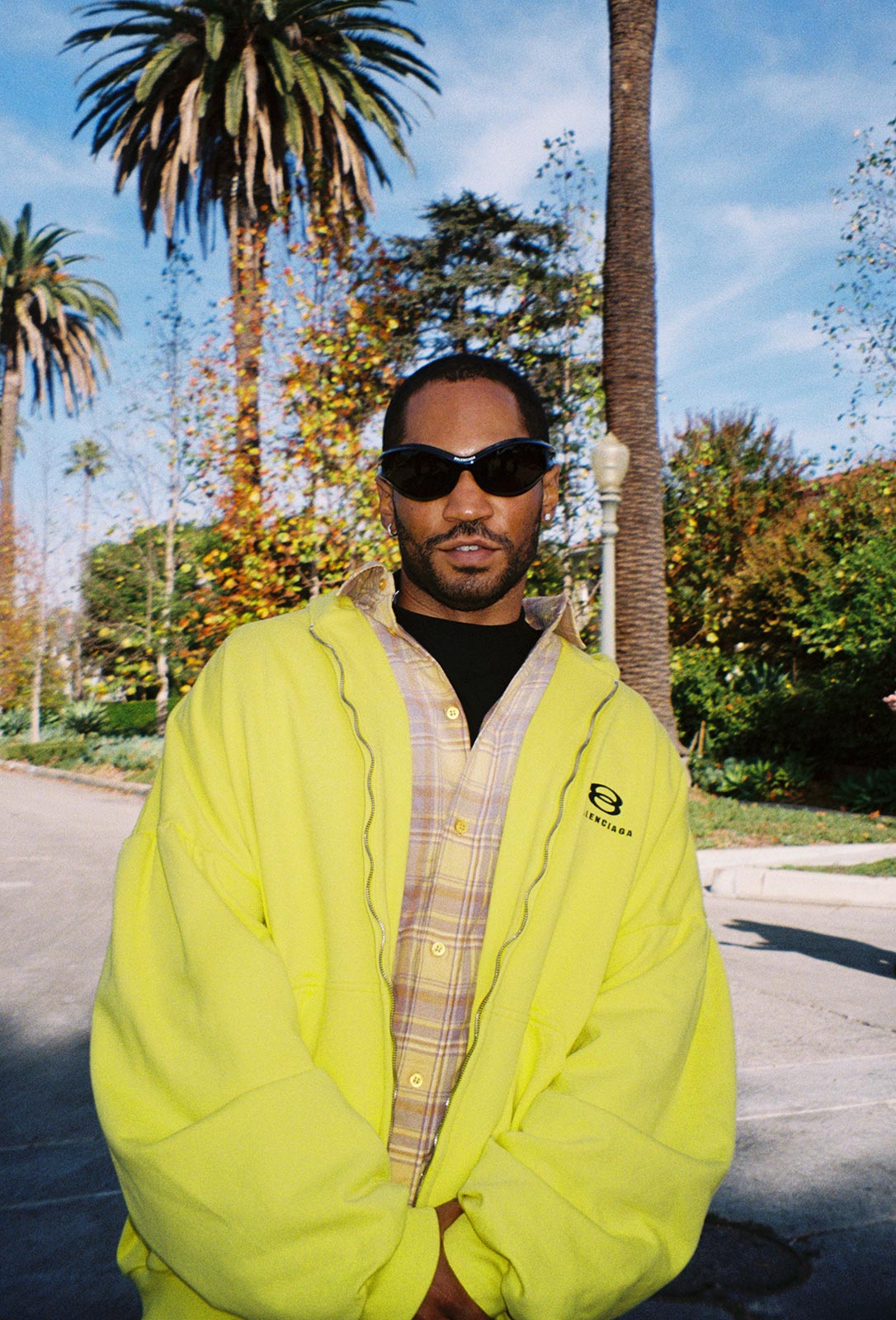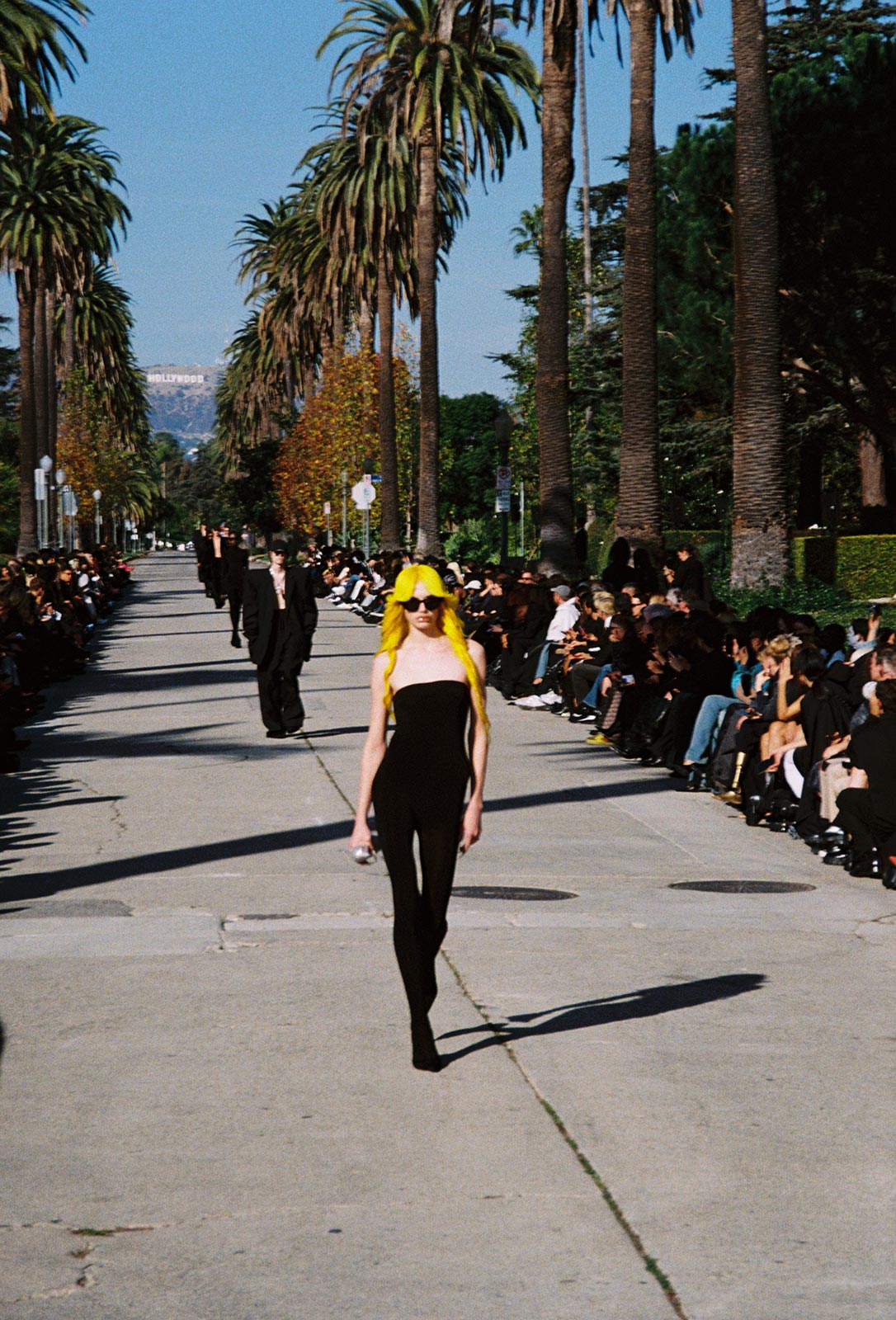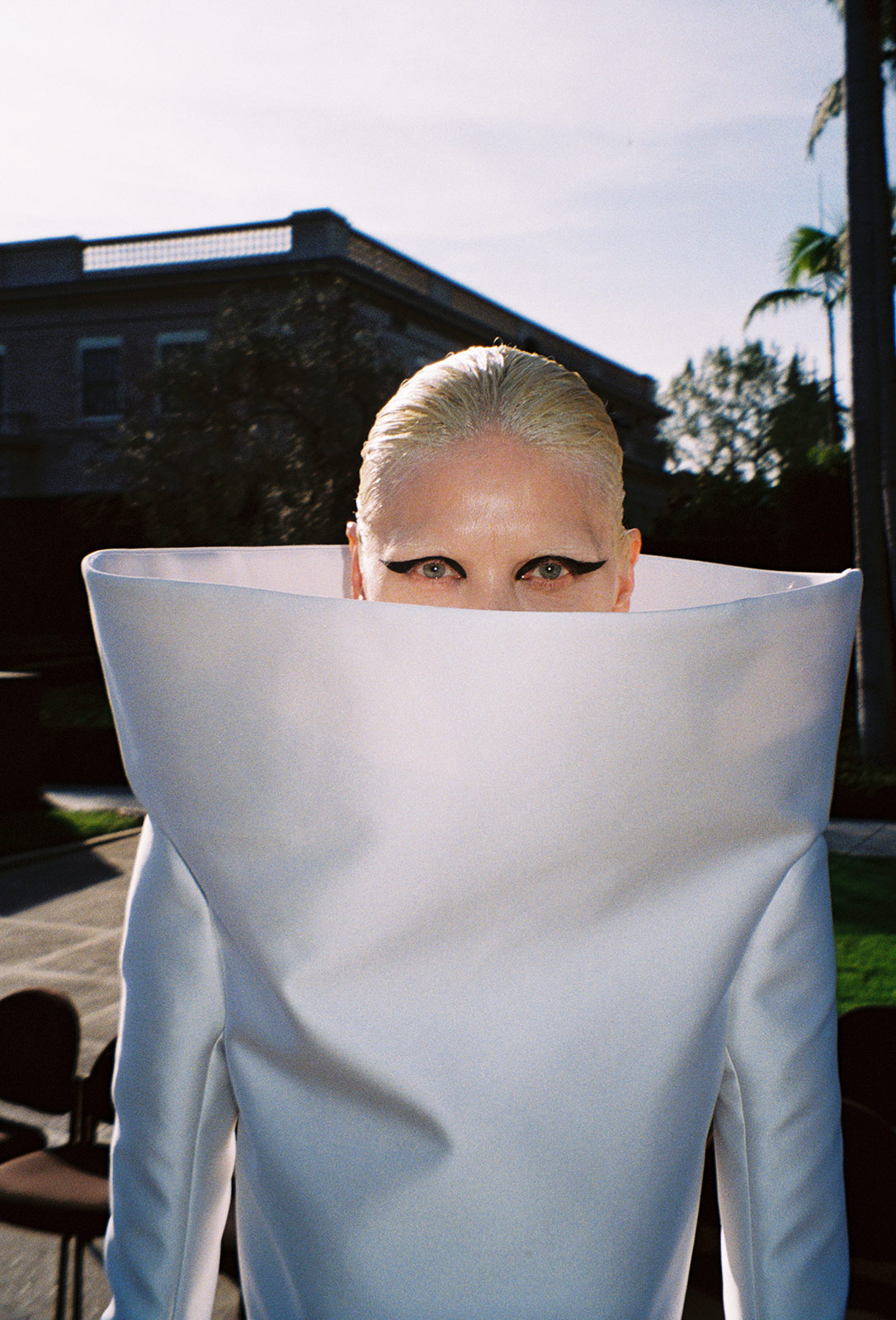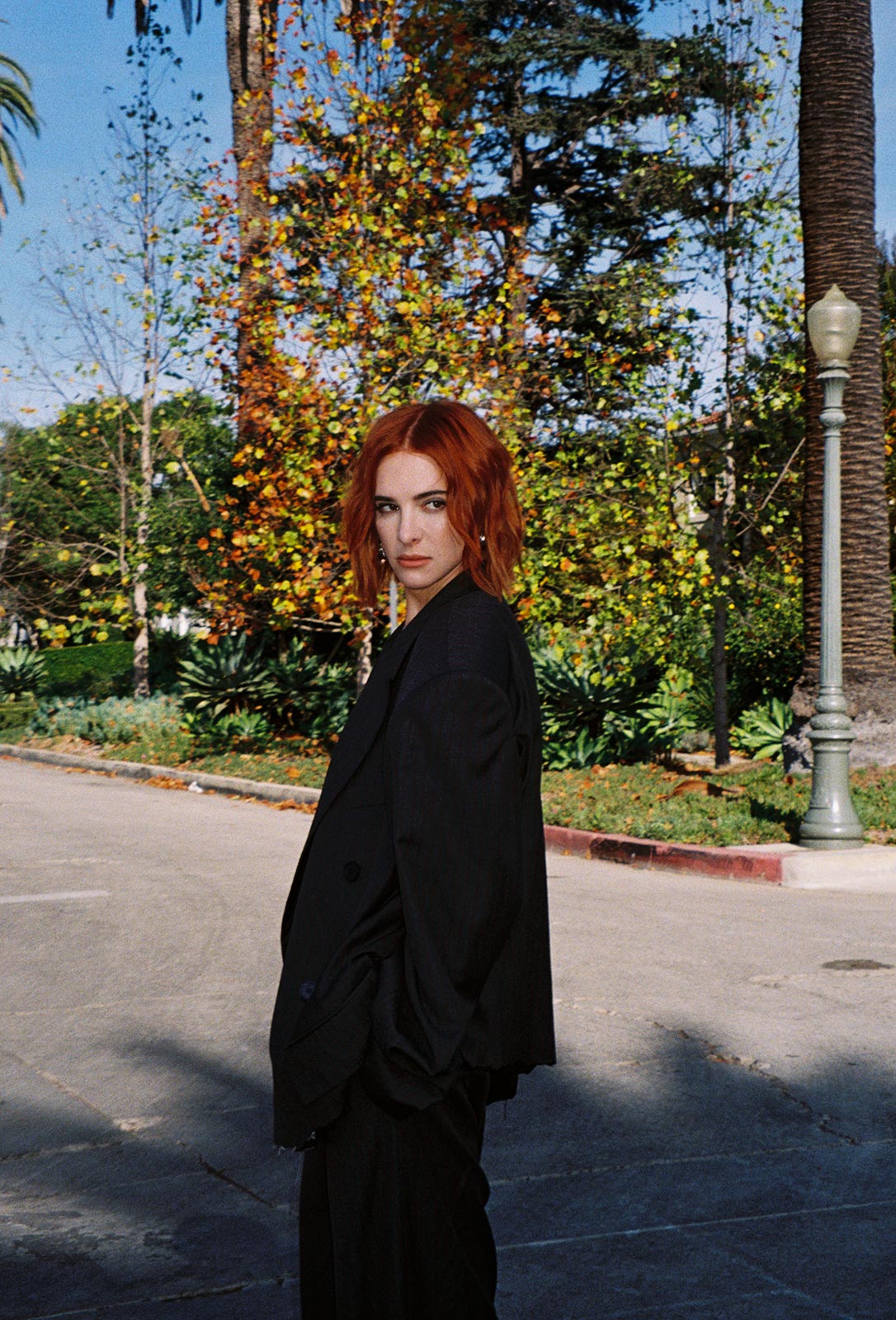From the streets of Hancock Park, creative director Demna provides his own unique take on Los Angeles’s many archetypes
When Balenciaga announced they would be hosting a show in Los Angeles in early December, speculation quickly erupted among the local fashion cabal as to which of the city’s iconic locations would receive the honor of a runway. The meme-ably neoliberal hallways of the Bonaventure Hotel in downtown seemed fitting, or perhaps the Chemosphere House way up in the Hills, an estate that literally looks down upon the proletariat below like a villain in a noir. There were even rumors circulating that creative director Demna had settled on the Erewhon at The Grove.
You can imagine attendees’ surprise when the shuttles (which came equipped with stripper poles) dropped them off at a standard residential block in Hancock Park. It was LA at its most obvious—celebrities socializing among the street ambience of car horns, sitting among McMansions framed by towering palm trees, the Hollywood sign looming in the distance.
The show opened with a shirtless model on a phone call, wearing basketball shorts and the classic chunky Balenciaga sneaker, this season’s silhouette rendered even more cartoonish than usual with an upturned toe. BFRND’s runway score was a mashup of hard electronic beats and vampiric organs overlaid by a series of tongue-in-cheek voiceover advertisements (like those you’d hear stuck in traffic on the 101), poking fun at the rampant wellness culture at the heart of the location. Exemplified by the first model, the casting wasn’t as much personality-based as it was built around personae. Demna, instead, presented a series of characters mimetic of any given afternoon at Erewhon: a smorgasbord of multi-hyphenates, micro-niche internet celebrities, actual celebrities, and nepo-babies. Cardi B was even there, who, by neither opening or closing, captured the surreal experience of spotting a celebrity in the wild. True to LA form, each character had one thing in common: they were a bit stoned and thirty minutes late to something, whether that be yoga, brunch, a meeting with their publicist, or a rave, which explained the intentionally haphazard styling. The choreography was precise, with each model’s walk tailored to their respective archetype. Pro-skater and burgeoning runway darling Efron Danzig had an especially convincing “East-side It Girl strut,” followed by Bridgette Nielsen ambling down the street like a West side mom in a valium haze.
For this collection, Balenciaga applied their tried and true grunge sensibility to an idea of LA basics, presenting a brief glance—like looking into a funhouse mirror—into the secretly-expensive activewear undergirding the city’s fashion identity. Velour tracksuits with emphasized whale tail thongs from behind, chunky Uggs (some reimagined into stilettos), and various coordinating sweatpant-and-hoodie sets felt like Lululemon on an acid trip. The intermittent red carpet dresses and faux-fur coats paid homage to a nostalgic, more decadent Hollywood, often drowned out by the athleisure industrial complex. Demna insists the show isn’t ironic, and instead comes from a sincere love for the city. To his credit, he appears to have a firm grip on what his West Coast consumers want. It’s the equivalent of a financial domination relationship—sure he’s teasing his customers, but it’s consensual, and everyone is getting off in the process.
He also seemed to be toying with pseudo-Goth phenomenon (one he is largely responsible for) presently running amok in LA: holding that same funhouse mirror up to influencers who shell out money for premium Erewhon subscriptions and SoHo club memberships, while flaunting a grunge aesthetic seemingly antithetical to even the most vague understanding of “wellness.” The look Demna created this season intentionally lacks context. There is no music, subculture, or sense of ideological resistance underpinning his references, the collection is instead based upon the designer’s fascination with LA, as someone who did not grow up in America —especially the mocked, stereotypical looks of the early naughties.
After the show, he told reporters, “All my cultural evolution as a teenager, growing up in this kind of post-Soviet vacuum, it really came from here: movies, music, everything that I kind of absorbed that later on started to become my fashion references.” The show parodied the spiritual economy of LA, in the Mecca of all things Goop and GMO-free. But as the music dimmed and the guests scattered and the street returned to its original banality, I considered the possibility that the questions Demna proposed this season, clearly sharpened toward Los Angeles’s consumer culture with a loving edge, were both rhetorical and sincere.


